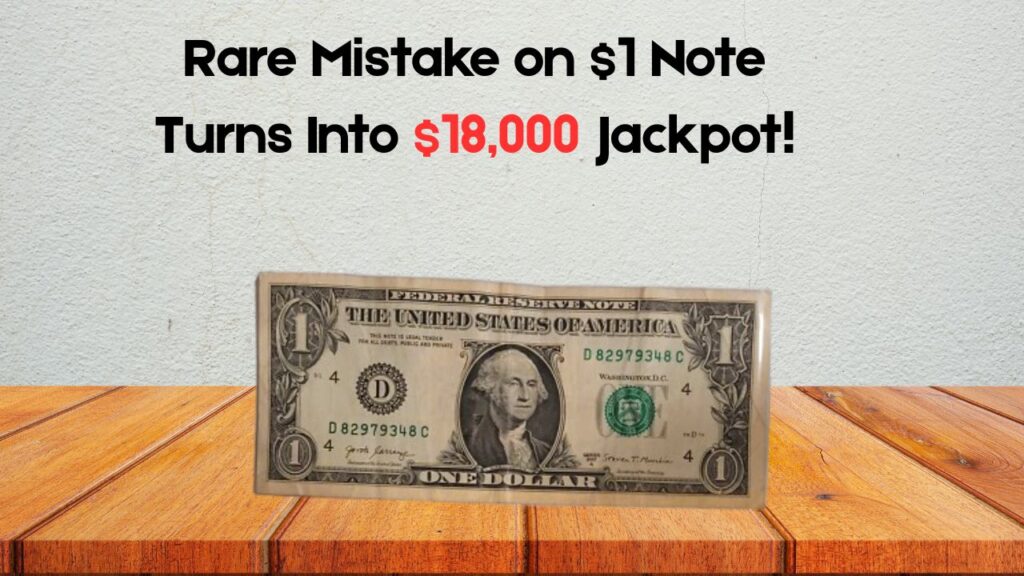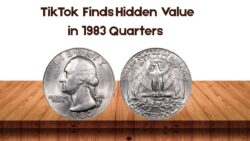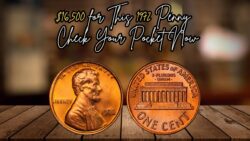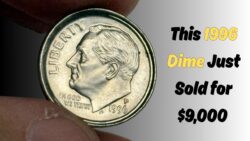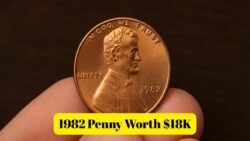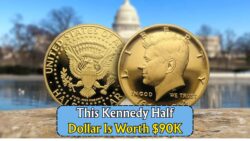1995 $1 Bill – In an unexpected twist of fortune, a rare 1995 $1 bill with a simple printing error has taken the numismatic world by storm—selling for a jaw-dropping $18,000 at a recent auction. While most people overlook the worn dollar bills in their wallets, collectors and currency experts are always on the hunt for mistakes—known as “error notes”—that can dramatically increase a bill’s value. If you’ve got a stack of old cash lying around, it might be time to take a second look. That seemingly ordinary $1 bill from 1995 could be worth thousands—and here’s why.
What Is So Special About the 1995 $1 Bill?
The bill that recently sold for $18,000 had one crucial flaw: a major printing error that occurred during the production process at the U.S. Bureau of Engraving and Printing. These errors are rare and often escape detection, making such notes highly collectible.
In this case, the 1995 $1 bill featured a misaligned overprint, causing key elements like the Treasury seal and serial numbers to be placed incorrectly on the bill. The ink shift was drastic enough to make the error visually obvious—but not so severe that the bill became unrecognizable.
Collectors refer to this type of misprint as an “offset printing error” or “misaligned overprint.” Depending on the severity and rarity of the error, collectors may pay thousands to acquire it.
How to Identify a Valuable Error in Your $1 Bills
Before you throw away your old bills or use them at the store, here are the features to look for:
Common Error Types That Increase Value:
- Misaligned Printing: Serial numbers or seals printed in the wrong place.
- Fold Over Errors: Part of the bill is blank because it was folded during printing.
- Ink Smudges or Smears: Caused by improper ink application.
- Missing Elements: A bill missing the green Treasury seal or one serial number.
- Double Prints or Ghosting: Overlapping or duplicated prints.
Why the Year 1995 Matters
While printing errors can happen any year, certain years like 1995 are more sought-after because of limited production batches or known error runs. That makes them more likely to be flagged by collectors.
How Much Can You Earn for a Rare $1 Bill?
Depending on the type and visibility of the error, your bill’s value could range from $100 to over $20,000.
Here’s a breakdown of potential values:
| Type of Error | Approximate Value Range |
|---|---|
| Minor Misprint | $50 – $300 |
| Offset Printing Error | $500 – $5,000 |
| Fold-Over Error | $1,000 – $7,500 |
| Major Overprint Misalign | $10,000 – $18,000+ |
| Double Denomination Error | $15,000 – $25,000 |
Where to Sell Your Error Bill
If you suspect your dollar bill might be valuable, don’t rush to the nearest pawn shop. Instead, follow these steps:
- Authenticate the Bill
- Consult a currency appraiser or a trusted numismatic expert.
- Use online forums like CoinTalk or Reddit’s r/Papermoney.
- Get a Professional Grading
- Companies like PMG (Paper Money Guaranty) and PCGS Currency offer authentication and grading services.
- Sell on Reputable Platforms
- Heritage Auctions
- eBay (with proof of authenticity)
- GreatCollections
- Local Coin Shows or Collectible Dealers
Tips Before You Sell
- Never clean or iron your bill – This can reduce its value.
- Keep it in a protective sleeve to avoid further wear.
- Take clear, high-resolution photos showing the error.
- Get multiple opinions on the bill’s estimated worth.
Why Collectors Are Paying More in 2025
The value of collectible currency, especially error notes, has soared in recent years due to:
- Increased interest from younger collectors (thanks to viral TikTok videos).
- Scarcity of older currency in circulation.
- High auction visibility driving up prices.
- Speculation that older currency will become rarer over time.
This is especially true for bills with verified, dramatic printing mistakes—like the 1995 $1 bill that sold for $18,000.
Real-Life Example
A man in Florida reportedly discovered an old stash of dollar bills in his late grandfather’s drawer. One of them— a 1995 $1 bill—had a large off-center overprint. He submitted the note for grading and listed it at auction. Just days later, it sold for $18,000 to a private collector in Texas.
His total cost? $1 and a little curiosity.
While many people treat $1 bills as disposable, a single glance might change your financial fortune. Whether it’s an old note from the 90s or a dusty stash you found while cleaning, always look closely for printing anomalies. What seems like a mistake may be your ticket to thousands of dollars.
So next time you’re handed a crumpled bill at a store—take a moment. That ghosted serial number or crooked seal could make you richer than you think.
FAQs About 1995 $1 Error Bills
Q1. What makes the 1995 $1 bill so valuable?
A1. A printing error—such as a misaligned overprint—can turn an ordinary bill into a rare collector’s item worth thousands.
Q2. Where can I check if my bill has an error?
A2. Look for off-center prints, missing seals, smudged ink, or misprinted serial numbers.
Q3. Do I need to get the bill graded?
A3. Yes, professional grading adds credibility and significantly increases resale value.
Q4. Can I sell error bills on eBay?
A4. Yes, but only after authenticating and grading the bill to build buyer trust.
Q5. How rare are these types of bills?
A5. Quite rare—especially in good condition—which is why collectors pay top dollar for them.

